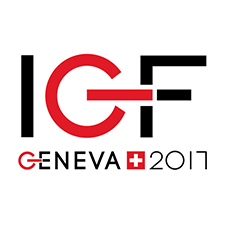NRIs collaborative session: Multilingual internet: IDNs under the magnifying glass
19 Dec 2017 11:45h - 13:15h
Event report
[Read more session reports and live updates from the 12th Internet Governance Forum]
The main objectives of the session were two-fold:
- to raise more awareness on Internationalised Domain Names (IDNs) and their relevance in the quest for a more inclusive Internet;
- and to explore challenges (and possible solutions) related to the implementation and use of IDNs.
The session was moderated by Mr Mikhail Anisimov, Coordination Center for TLDs .RU/.РФ, and Mr Andrea Beccalli, ICANN, who structured the session into three segments.
The first segment focused on multilingualism and IDN. ‘Why were IDN created?’ was the leading question. All speakers agreed that the introduction of the IDN system was mainly motivated by multilingual reasons.
Ms Alena Belskaya, Hoster.by for TLDs .BY/.БЕЛ, stated that having national alphabet(s) in the IDN is crucial for people’s cultural and national identity because it allows them to fully express themselves in their national languages. The only challenge, from their perspective, is represented by people who are not familiar with the Cyrillic alphabet.
Mr Edmon Chung, Universal Acceptance Steering Group, expressed his optimism regarding the future of the IDN despite the decrease of the initial enthusiasm. This is due to two factors. Firstly, that new technologies such as audio input methodologies provide users with content in their national languages. Secondly, that some countries have experienced an increase in the Domain Name System (DNS) resolution rate for IDN. For example, in Japan, such increase was 30 times higher than the datum of last year.
Ms Irina Danelia, Deputy Director at the Coordination Center for TLDs .RU/.РФ, considered that for the Russian language, the main objective of IDN is actually achieved: using the national language in the search engines. Moreover, she added that such achievement does not regard only IDN but also versions of the browsers that are supported through the toolbar in the Russian language.
Mr Jonne Soininen, ICANN Board, summarised the panel discussion into three main points. He stated that IDN creation was initially motivated by the fact that some people do not know the Latin script. Moreover, he affirmed that the presence of one’s national language in the domain system is essential for cultural identity. Finally he highlighted a practical concern: the use of another language keyboard while in need to type scripts in the Latin alphabet.
The first segment was followed by Q&A which focused on whether the infrastructure of the IDN is actually ready to support a high number of names while currently IDN represents only 5% -10% of the entire registries of the domain system. Moreover, concerns were raised over the impossibility of writing in one’s language when resorting to different software..
The second segment focused on the obstacles regarding the implementation of IDN. The speakers agreed that one of the existing challenges is the lack of proper promotion of the IDN. Moreover, they also pointed out that although IDN scripts available in national languages are important for domestic institutions that do not use English (e.g. cities or schools) at the same time this poses a disadvantage for Small and Medium Enterprises (SMEs) that aim at expanding their business internationally.
Ms Lianna Galstyan, Internet Society Armenia, registry for .AM/.հայ,talked about the introduction of the Armenian IDN registry. Although its launch has been successful, the registry has not seen as much registration as expected and this is partially due to the fact that IDN e-mail is lacking. She also stated that the price for an IDN entry is not an obstacle to the development of the system.
Mr Edmon Chung, targeted two main obstacles. Firstly, there are the costs linked to the setup of a new service, as in the case of IDN e-mails. ‘The more you market IDN, the more customer service you get’, he added. Secondly, he spoke of a ‘market failure’ in the case of the IDN system due to the lack of proper infrastructure of the IDN system. Hence, he insisted upon governments’ action towards the promotion of new systems.
The second Q&A time focused on the lack of harmonisation and standardisation on software products. On the one hand, concerns were raised over the reliability of messages sent from email addresses that have a different alphabet than the Latin one and on the fact that many web services are not currently open to accept email addresses written in different alphabets.
Soininen also maintained that the biggest problem for IDN implementation is universal acceptance which ‘demands the synchronisation of an entire industry and not only of just a technological component’.
Ms Jennifer Chung, DotAsia Registry, agreed with the concerns raised by the previous speakers and stressed that universal acceptance is especially dangerous for SMEs because ‘they don’t see the value of creating the presence online in their own language if they can’t interact with the clients and customers in those languages’.
The third segment focused on the vendors-side and the previously-discussed topics were further developed. All the speakers reiterated that the implementation of new services exposes companies to a ‘too-high level of risk’ thus ‘the pioneers will pay the bigger cost in the market’. They all considered that in order for companies to innovate, the possible benefits need to be highlighted and the readiness of the current IDN infrastructure is to be taken into consideration.
By Marco Lotti
Related topics
Related event

